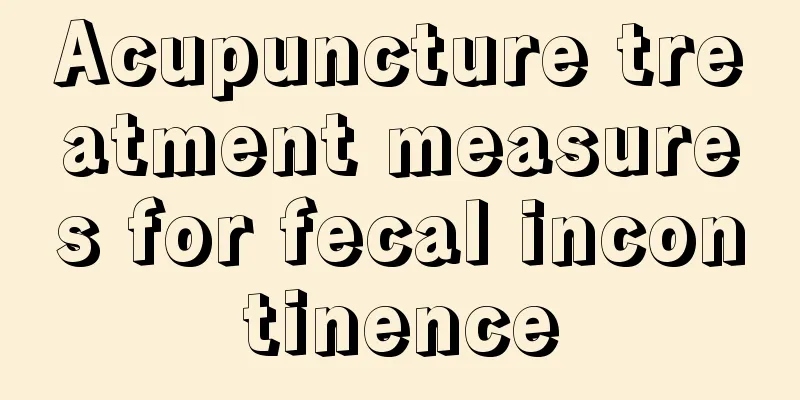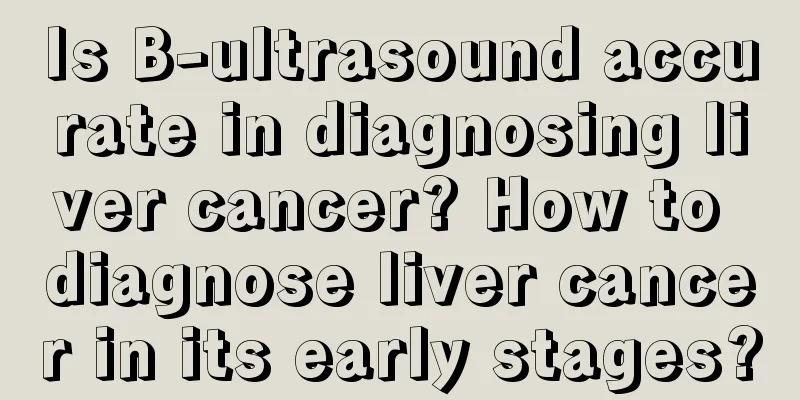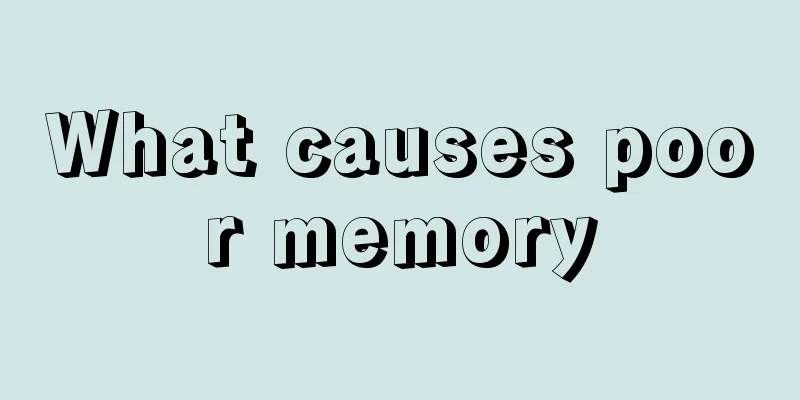Acupuncture treatment measures for fecal incontinence

|
Fecal incontinence means that feces cannot be controlled and flows out of the anus involuntarily. Its incidence rate is not very high. When it is completely incontinent, although it cannot directly endanger a person's life, it also causes physical and mental torture to the patient. I heard that acupuncture can treat fecal incontinence. Next, let’s take a closer look at how acupuncture treats fecal incontinence. 【Acupuncture symptomatic treatment】 Main acupoints: Changqiang, Baihui, Zusanli, Balu. Acupoints: add Hegu and Quchi for severe heat toxicity; moxibustion Guanyuan and Shenque for cold pathogenic injury; moxibustion Qihai and Baihui for qi deficiency; add Pishu, Shenshu and Mingmen for spleen and kidney yang deficiency. Operation: Conventional acupuncture, according to the principle of deficiency-tonifying and excess-purging. Changqiang obliquely puncture, the needle tip is inserted upward and parallel to the sacrum for 0.5-1 inch, and the rectum must not be punctured to prevent infection. Lifting, inserting, twisting and flat tonifying and flat purging method; Baihui punctures 0.5-1 inch backward and flat, twisting and tonifying method; Zusanli punctures 1-1.5 inches obliquely toward the abdomen, lifting, inserting, twisting and tonifying method; Bajing punctures 1-1.5 inches straight, lifting, inserting, twisting and flat tonifying and flat purging method. The acupoints are matched according to the principle of deficiency-tonifying and excess-purging, and the method of lifting, inserting, twisting and tonifying and purging is adopted, Guanyuan, Shenque, Qihai, and Baihui are moxibustioned. After acupuncture, the needle is retained for 30 minutes. Formula meaning: Changqiang and Bali are proximal acupoints, and needling them can regulate local qi and blood; Baihui is a Du channel acupoint, which has the function of raising yang and lifting the sunken, and has the meaning of treating lower diseases from above; Zusanli is a stomach meridian He point and a lower He point, and needling it can strengthen the spleen and replenish qi, and dredge the qi of the intestines. All the acupoints are used together, and the upper and lower parts are related, which can raise the yang of the spleen and stomach and imprison the anus and intestines. Combined with Gu and Quchi, it can clear the intestines and release heat; moxibustion Guanyuan and Shenque warm the interior and help yang; moxibustion Qihai and Baihui raise and replenish qi; Pishu, Shenshu, and Mingmen warm the kidney and strengthen the spleen. In addition to acupuncture treatment, non-surgical methods include: 1. Non-surgical treatment (1) Dietary adjustment: Treats inflammation of the anorectal canal, makes the stool firm, avoids diarrhea and constipation, and eliminates the discomfort caused by inflammation of the anorectal canal. The common method is to eat more high-fiber and nutritious foods and avoid irritating foods. If there is inflammation in the anorectal canal, antibiotics can be taken symptomatically. If there is inflammation in the perianal skin, you should always keep it clean and dry or apply topical medication. (2) Anal sphincter exercise: The method is to ask the patient to contract the anus (lift the anus) about 500 times a day, and hold it for a few seconds each time. This can enhance the function of the anal sphincter. (3) Stimulate the contraction of the anal sphincter. For patients with neurogenic anal incontinence, electrical stimulation therapy and acupuncture therapy can be used. Electrical stimulation therapy is to place the stimulation electrode in the external sphincter, use electrical stimulation to stimulate the anal sphincter and levator ani muscles to produce regular contractions, which can improve the condition of some patients with anal incontinence. Acupuncture therapy is a traditional Chinese medicine therapy. Some patients can also achieve good results. Commonly used acupoints are Changqiang, Baihui, Chengshan, etc. Fecal incontinence, also known as anal incontinence, can be treated with acupuncture. We have seen the method in the above introduction. Currently, if you want to confirm that you have fecal incontinence, in addition to correct medical interviews, the key is to rely on professional physical examinations such as endoscopy, rectal digital examination, defecography, electromyography, etc. to confirm the diagnosis. |
<<: What causes constant bloating in the stomach?
>>: What is the daily protein intake?
Recommend
How to treat chronic anxiety?
Anxiety disorder is the abbreviation of anxiety n...
What to do if clothes are stained with oil
What should I do if my clothes are stained with o...
The woman is inexplicably irritable
Women in life always feel inexplicably irritated,...
How to get out of the misunderstanding of school aversion
Aversion to school is a relatively serious proble...
Exercise after esophageal cancer surgery cannot be ignored
Esophageal cancer is a common digestive tract tum...
What are the preventive measures for fibroids
What are the preventive measures for fibroids? No...
What causes chest acne?
Many adolescent boys have a lot of acne on their ...
How to use dental floss
Dental floss is something that many people don’t ...
Can babies use ceiling fans?
In the hot summer, the sultry weather will make p...
What are some tips for having blood drawn without pain?
Everyone has had the experience of having blood d...
What are the classifications of thyroid cancer? Thyroid cancer is generally divided into these 4 types
There are many types of thyroid cancer, the most ...
How long can you live with pancreatic cancer
In life, people think that pancreatic cancer is a...
How to make the skin thicker if it is too thin?
The skin is a thin layer of tissue, but this laye...
Small cell lung cancer patients should know the 4 hazards of small cell lung cancer
The harmfulness of small cell lung cancer is main...
What are the effects, functions and contraindications of Spirulina?
Spirulina actually has high health benefits and c...









